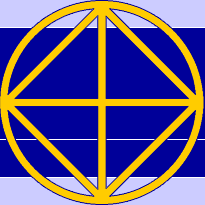The Beginning of the New Year
This night we are passing from December 31st, 2010 to January 1st, 2011, and start, in our counting, a new year. At the threshold stands Janus, the god of gates, doors, doorways, beginnings, endings and time in Roman mythology.

Bust of Janus from the Vatican (Wikipedia)
There are many different new years, and it is good to remember the relativity of our social convention as per the 1st of January, a date which is neither a threshold on the planet nor in cosmos. It took quite a long time before 1 January became the standard start of the civil year.
Here are some thoughts of Master EK (Ekkirala Krishnamacharya) about “The Beginning of the New Year” and how it is celebrated in traditional India as well as some thoughts about purification:
“Where does the year begin or end? Cyclically seasons emanate from it to blossom and come to fruition. In this gyration of the year all living things – trees, as also creatures that are aquatic, earthly and airborne – have their own individual beginnings. It is natural for each to consider its own emergence as the beginning of the year. It is a similar line of thinking that made man come up with the idea of “Samvatsaradi” (adi=beginning, Samvatsara = year). Men brought up in different regions have taken a different approach to this concept of the New Year. People residing on the equator have a different New Year different from those of people residing at the North and South poles. This has given rise to the differences in the customs and habits of people belonging to different continents and countries.
Various traditions connected with the New Year have come into vogue over the years. By the earth’s going round the sun once, the solar year is formed. Depending on the movements of the Sun and the Moon, the full moon and the new moon, the lunar year is formed. In this way, a total of nine types of measurements of years as also the astrological knowledge required to arrive at them were available from lakhs of years to a few countries like India. What are widely in use in a majority of the nations are solar and lunar months. What is now regarded as the beginning of the year, January 1st, is based on the astrology of Huns. What is observed as the beginning of the year in India, ancient Egypt, Greece Mesopotamia and all the Arab countries is based on lunar calculations. This is “Chaitrasuddha pratipat.” Usually this falls around 14th or 15th of April.
There is a scientific principle behind considering April as the first month of the year. Every year in the sun’s course from the south to the north crossing the equator, is referred to as vernal equinox. It is considered a sacred day. It is from this day that fresh tender leaves appear on the trees and a new quickening of life all round occurs. That day also marks the beginning of what in a solar calendar is called the month of “Mesha”. This corresponds to March 21st in the present age. Our ancient people in India accepted as the beginning of the year the day following the first new moon that occurs after this date. They called it springtime may be because fresh impetus for life is activated during this time all over the cosmos. This impulse lies dormant like the oil in the human body or the ghee in milk. It is said in the Rigveda that if the year were to represent the yajna of life, then, this impulse is like the offering of ghee made during yajnas. Treating that as the beginning of the year ancient scientists identified six seasons based on the laws of nature operative during each of those seasons.
March 21st tallies with our solar calendar. Not only that, the human year seems to abide by the ancient astrological calculations of other nations also. As proof of the fact that the solar calendar was followed by many other nations in determining the beginning of the year, we may examine the names of few more months. September corresponds to “Saptama” which means “Seventh”. September will be seventh month only if March were to be the first month. Similarly, October corresponds to “Astama” or eighth month, November to “Navama” or ninth month and December to “Dasama” or tenth month, only when March is taken to be the beginning month of the year. These are months whose names have not been polluted by the encroachment of politics. All the others are changed so drastically as not to leave even a trace of the earlier names or forms.
It is an age old tradition in India washing one’s hair on New Year’s day wearing new clothes and eating chutney made of tender neem flowers. In the olden days, ten days prior to the New Years’ Day used to be declared as holidays to all the departments pertaining to all professions. People were expected to tone up their bodily systems in accordance with the time honoured rules laid down to safeguard one’s health. They were encouraged to get all defects and shortcomings rectified so that perfect health may be re-established. This is not to say that they were forced to swallow medicines. Medicines may alleviate diseases but they can never improve health. Scientists have always been emphatically declaring that protection and promotion of good health depends on the informed care one takes of one’s food and recreational habits. In keeping with the in built nature of each of the seasons, spring time always causes a thorough overhauling of the entire body. This takes place in a gentle way in the case of a healthy man. In diseased people this forces the diseases to flare up. This discovery made our ancient scientists to evolve a technique that can ensure the smooth working out of this springtime “scrutiny”. Ancient sciences like Ayurveda have been saying time and again that everyone should start using such health techniques at least ten days before the New Year’s Day. Those techniques are; one should take an oil bath everyday preferably using gingelly oil, new sprung neem flower should be eaten every day. Pieces of raw mangoes (not pickle) should also be eaten. Tamarind fruits just plucked from the trees should be eaten. Sugar cane juice should be drunk. It is as a symbolic representation of all these rules that the tradition of eating “Ugadi pacchadi” has come into existence. Only as a token of past tradition, little quantities of tamarind water and neem flowers are added now in ugadi chutney. Sometimes raw mango pieces are also used. Some people use jaggery in the place of sugar cane juice. At present, even these little quantities of prescribed health foods are eaten not on all the ten days but only on the New Year’s Day morning, and that too, as a chore to be attended to perfunctorily. The scientific principle behind this technique is now lost in the womb of time, leaving behind only a ‘token’.
This does not mean that the token should be discarded. It only means that the proven scientific truth should be properly followed so as to gain maximum benefit. The ultimate objective of the techniques mentioned above is to enhance the quality of bodily fluids, blood, minerals, flesh etc. These techniques are called elixirs, that is aids that give a tonic boost to the physical body. But this perspective of “rasayanams” is changed now. “Rasayanam” is now understood as a tasty to eat Ayurvedic medicine. Well, coming back to the Telugu New Year and the health techniques enjoined to be practised on that day, we have to admit that they are passing on a tradition that has the backing of science. On that count, let us put these techniques to good use by our implementing of them in our lives.”

Walking into the New Year. Photo of a friend


